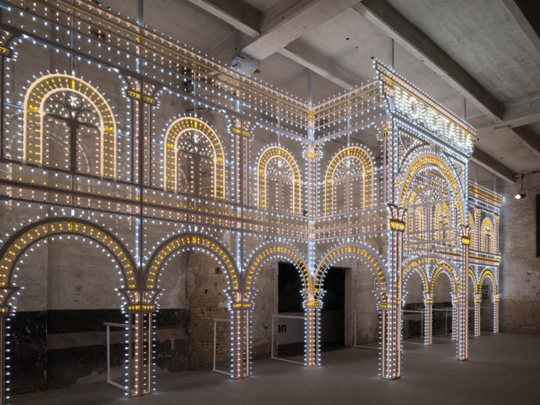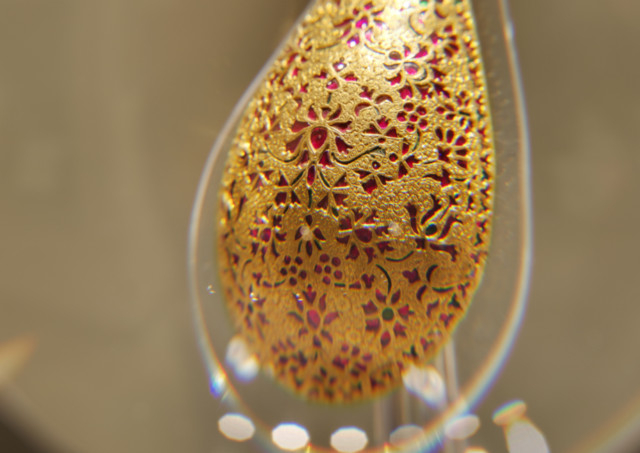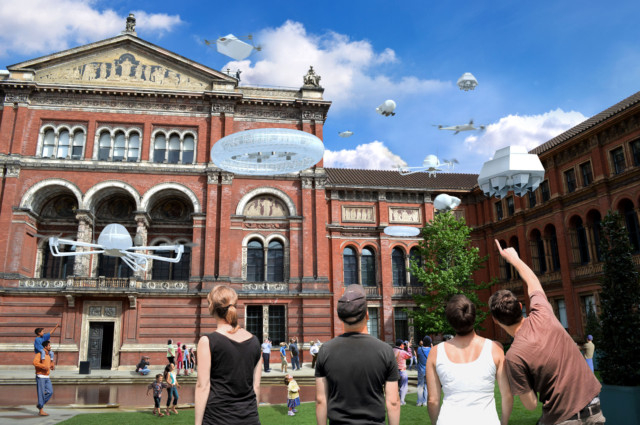
There is more to Swarovski than it being a staple fashion and interiors go-to. It has fast evolved into a name synonymous with protecting, nurturing and promoting all that is good in the world of design.
The 14th International Architecture Exhibition of La Biennale di Venezia (open until November 23, 2014), Fundamentals, emphasis on the history of architecture and architectural culture.
Fundamentals consists of three interlocking exhibitions: Elements of Architecture in the Central Pavilion; Absorbing Modernity 1914-2014 in the National Pavilions; and Monditalia. The entry to Monditalia — designed by Dutch architect and theorist (and Director of the Biennale), Rem Koolhaas, and his practice OMA, is a dramatic illuminated archway. A sparkling façade made up of thousands of coloured light bulbs and Swarovski crystals, “Luminaire”, references the grand-scale urban lighting installations that are an integral part of Italian culture, associated with celebrations and religious feasts, and even forming a centrepiece in several of Federico Fellini’s films.
“‘Luminaire’ acts as a transformative portal to the world of Monditalia, Rem’s vivid tableau of Italian history,” explains Nadja Swarovski, chairwoman of the Swarovski Foundation and member of the Swarovski Executive Board. “It offers a fresh perspective, literally bringing new light to bear on a familiar place.”
I had the opportunity to meet Swarovski, last year at London Design Festival’s God Is in the Details exhibit at the Victoria and Albert Museum (V&A).
Committed to promoting artistic inspiration across the creative disciplines — art, design, fashion, theatre and film — the foundation is also actively involved in human rights and conservation of natural resources. “One of our first major projects includes the restoration of the statue of Saint George on Palladio’s great dome at the Basilica di San Giorgio Maggiore in Venice,” says Swarovski. “The restoration will help in preserving the 16th century Basilica as one of the key examples of Palladian architecture in the city of Venice.” The restored statue was unveiled in April.
Also on the cards is the creation of a world-class learning centre for design at the Design Museum, London. “The Swarovski Centre for Learning, which will open in 2015 when the museum moves from its present location on the Thames to Kensington, will be an exciting new platform for research and engagement with creative disciplines. We hope that it will inspire and support a new generation of young designers.”
As I iron out this year’s must-sees at the forthcoming London Design Festival (September 13-21), it comes as no surprise that another Swarovski collaboration features prominently (and dare I say, is already a personal favourite).
Designed by the collaborative design practice Superflux for the London Design Festival, The Drone Aviary is an interactive installation staged within the Victoria and Albert Museum’s John Madejski Garden. All 15 drones have a different size, shape and aesthetic, and are programmed with their own “personalities” or behaviours. In the safe confines of the garden, interact with people, perform tasks and engage in their own activities.
Part of Swarovski’s design and innovation support programme, the installation and the drones will incorporate new technologically advanced materials from Swarovski’s innovation laboratories, including lenses, crystals and fibres. “The project deepens our collaboration with the London Design Festival with a cutting-edge project that enables V&A visitors to experiment with drones for the very first time,” explains Swarovski. “The Drone Aviary gives us a glimpse into the future by exploring how these amazing new technologies will impact our everyday lives, how they will buzz around our urban landscape and interact with people in entirely new ways.”










